Terence Gray in Egypt
In 2022 the Society acquired a large collection of Papers relating to Terence Stannus Gray, known in his later life as Wei Wu Wei. Since the acquisition the material has all been rehoused in archival packaging and a list of its contents produced. Terence Gray is best known for his contributions to experimental theatre in setting up the Cambridge Festival Theatre and, in later life, for his contributions to philosophy as Wei Wu Wei. However, as a younger man, Gray was also interested in archaeology and went to Egypt several times to help with excavations and photography.
Within the donated material we have one small archival box relating to Gray’s interest in Egypt, an interest which also spilled over into his theatre productions. The box contains several sets of photos and, this week, alongside cataloguing the Papers of Richard Pankhurst (more of those later), I have been undertaking some simple conservation on some of these photographs to hopefully preserve them into the future for interested researchers. As yet, I haven’t undertaken detailed research on Gray’s time in Egypt but I am grateful to Maarten Horn, Senior Library Information Assistant and PhD Student in History, University of East Anglia, for the majority of the information I have already gleaned.
Gray took at least four trips to Egypt after undertaking some classes in Egyptology at University College, London in 1920-1922:
- (Possibly March) 1924: Gray participates for a month in the BSAE’s (British School of Archaeology in Egypt) excavations at Badari, Egypt, under the field direction of Guy Brunton. The BSAE itself was led by William Flinders Petrie.
- 1936-37: starting from Armant, Egypt, Gray accompanied Hans Winkler on research trips into the Western Desert investigating rock drawings and inscriptions.
- Spring 1938: investigating Gilf el Kebir and Uweinat in Western Desert, led by Oliver H. Myers and R. Bagnold. Also present were R.F. Peel and Halop Palamudian.
- January-February 1949: An preliminary archaeological “survey of ancient sites on the right bank of the Nile in the region of the 4thCataract, between Karima and Abu Hamed” for the Archaeological and Museums Board.
The last expedition is certainly contained within the photographs – there are 12 black and white prints which were conveniently (for me) wrapped with a label stating ‘4th Cataract Expedition’.
Photographs from the 4th Cataract expedition (unlabelled)
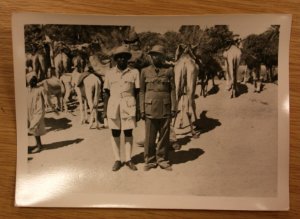
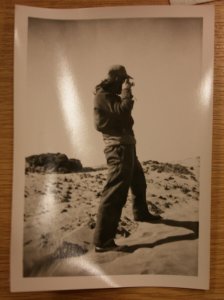
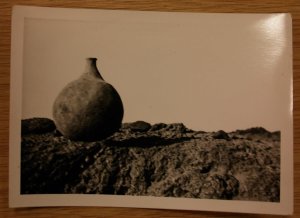
There are also some relating to the expedition of 1938. I can deduce this from an accompanying list which is headed ‘Peel’s Photographs’ and which notes prints required by Gray. Within the collection are photographs which are numbered and labelled to match those on the list.

Photographs from Gilf el Kebir and Uweinat in Western Desert expedition
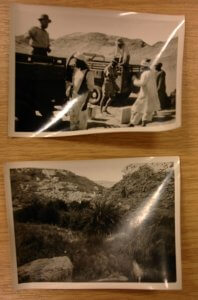
Those two sets I can therefore relatively easily trace. But there are 3 more sets of photos and a set of postcards created by Turner’s Camera Exchange, Pink Lane, Newcastle-upon-Tyne which will need more research in the coming weeks. Fortunately many of them are labelled which should help with identifying the relevant expedition. One question among many is why would Gray used a Camera Exchange in Newcastle? Were they undertaken by another team member and sent on to Gray? This part of archival work I find fascinating. I always say to volunteers that it’s a bit like being Sherlock Holmes, piecing clues together to get a big enough picture in order to be able to catalogue the material accurately. So, once the photos have all been conserved, I will begin examining them in detail and hopefully gain enough information in order to create good catalogues for them.
Photographs from as yet unknown expedition
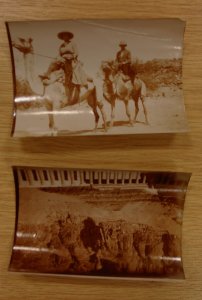
These photographs come from a set of originally 42 (sadly one is missing) Each is labelled which should aid their identification. The lower photo shows the Mortuary Temple of Hatshepsut at Thebes. The upper one is labelled ‘R.F. and H.S.F’. – so if I can identify those initials with members of a team, that should enable me to decide to which trip these photographs relate.
And while I’m writing about catalogues, those who read my earlier blog post about Richard Pankhurst and Graham C. Dorsett might be interested to hear that the catalogues for the Papers of Richard Pankhurst and for the Royal Asiatic Society Collections Loans are both complete and available. We decided that the Dorsett photographs will be added to our photographic collections with their provenance included in their catalogue. So these are now suitably packaged and listed and will become Photo.89.

